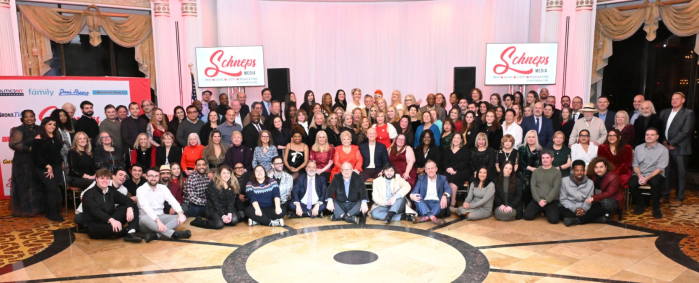On a subway, the height of commuter frustration is being stuck between stations. For straphangers on buses, it’s getting caught in a sea of red lights.
A new technology would change that at, least a little.
“Traffic signal priority,” or TSP, equipment on buses and city streets can slightly manipulate traffic signals if a bus is approaching an intersection. This way, a bus can keep moving with minimal effects to others on the road.
MTA spokesman Kevin Ortiz says the pilot programs have been successful on several Select Bus Service routes. TSP is now available on five routes, with two more expected by the end of the year.
“Moving forward, we will solicit bids to procure software that can be rolled out to all buses by 2018,” Ortiz wrote in an email.
A new fleet of sleek Wi-Fi enabled buses was unveiled to much fanfare in the spring: Over the next five years, the city will get more than 2,000 buses, representing more than a billion dollars in capital investment.
These new buses, however, have the hardware but not the software for TSP. This prioritizes “consumer electronics not service electronics,” says Jon Orcutt of TransitCenter.
Speeding up the installation of TSP is one of a number of potential fixes that transit advocates want to boost an under-regarded bus system.
The other mass transit
“Buses in New York City are slow, unreliable, and unfortunately getting worse,” asserted a TransitCenter report last month.
While subway ridership and city population has increased, the report noted that bus ridership dropped 16 percent between 2002 and 2015. The speed of buses also decreased.
That’s not surprising to New Yorkers who avoid buses unless absolutely necessary.
Lately, it’s gotten easier to do so, with the rise of bike sharing and better bike lanes as well as e-hail apps and green borough cabs, says Richard Barone of the Regional Plan Association. At the same time, buses haven’t kept up in competitiveness.
This is a nuisance for riders in Manhattan or transit-heavy sections of the outer boroughs, who can replace buses with walking or subways. But for commuters living far from the subway, buses are a lifeline — often the only way to get to work from neighborhoods with affordable housing.
Sandra Piscitello, a 40-year-old Bensonhurst, Brooklyn resident, for example, says she takes the bus at least four times a day — with her kids to their school, in Manhattan to get her to work, and then all over again on the way home.
There, the buses are regularly so packed that people swipe up front and go around the back to get in, Piscitello says. Sometimes they’re too packed to get on at all, which makes for long trips. Either way, it’s “standing room only.”
What would really make buses better?
While you’re sweating on the sidewalk waiting or crammed onto a bus crawling through traffic, the heralded Wi-Fi that the new fleet of buses boast might be nice, but not high on your mind.
Advocates point to other, more consequential solutions to get buses moving quicker and more efficiently. These include dedicated bus lanes and off-bus payment, which the MTA and NYC Department of Transportation are attempting.
Other, farther off solutions include multi-door boarding, more efficient routes, and better information about where buses are on their routes, in addition to TSP.
“There’s no silver bullet,” says John Raskin of the Riders Alliance. Instead, there are “eight different bullets all made of bronze that all have to be fired.” That will take more attention being paid to the step-sibling of the city transit system.
“If the table’s set one way, you’re going to get a certain outcome,” says Barone from the RPA.
“Our table is not set right now for buses to succeed, but to fail. And that’s what they’ve been doing.”
This is amExpress, the conversation starter for New Yorkers. Subscribe at amny.com/amexpress.






























